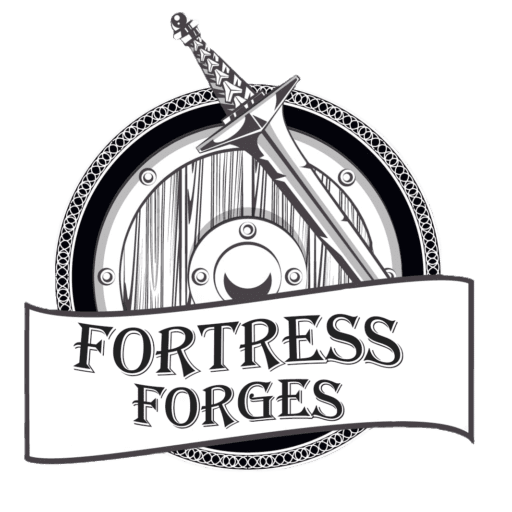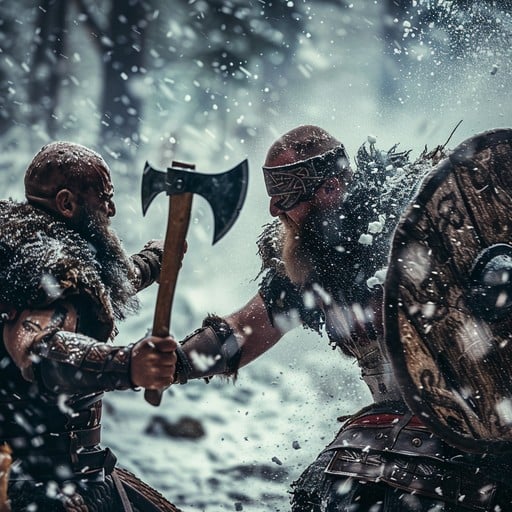Viking Axes: Types and Uses

The Viking axes: types and uses reveal a fascinating aspect of Norse weaponry and culture. Viking axes were versatile tools that served both as deadly weapons in battle and essential implements in everyday life. At Fortress Forges, we honor this heritage by offering a wide range of hand-forged Viking axes that combine historical accuracy with exceptional craftsmanship.
Understanding Viking Axes: Types and Uses
When discussing Viking axes: types and uses, it’s important to recognize that these weapons were not one-dimensional. They varied greatly in design, size, and function, reflecting the diverse needs of Viking warriors and craftsmen.
Types of Viking Axes
1. The Bearded Axe (Skeggøx)
The bearded axe is one of the most iconic Viking axes, characterized by its extended lower blade edge, or “beard.” This design allowed for a larger cutting surface while keeping the axe lightweight. It was effective in combat and useful for woodworking.
2. The Dane Axe
The Dane axe was a large two-handed battle axe used by elite Viking warriors. Its long handle and broad blade made it a fearsome weapon capable of delivering powerful blows. This axe type was favored in open battlefields and is often depicted in Viking art.
3. The Francisca
Though originally a Frankish weapon, the Francisca was adopted by Vikings as a throwing axe. Its curved blade and compact size made it ideal for throwing at enemies before close combat.
4. The Hand Axe
Smaller and more versatile, the hand axe was used both as a tool and a weapon. It was commonly carried by Vikings for daily tasks such as chopping wood, but could also be wielded in battle when needed.
Uses of Viking Axes
The Viking axes: types and uses extended beyond warfare. Axes were indispensable tools for farming, shipbuilding, and crafting. In battle, their design allowed for both slashing and hooking maneuvers, making them effective against shielded opponents.
Craftsmanship of Viking Axes
At Fortress Forges, our Viking axes are hand-forged using traditional methods to ensure authenticity and durability. The forging process involves heating high-quality steel, hammering it into shape, and tempering the blade for strength and flexibility.
Materials and Design
Viking axes were typically made with iron or steel heads and wooden handles, often ash or oak. The balance between the blade and handle was crucial for effective use. Our collection reflects these historical standards, offering both functional and decorative axes.
Explore Viking Axes at Fortress Forges
Our selection includes a variety of Viking axes, such as the Bearded Axe, Dane Axe, and custom hand-forged axes crafted to meet collectors’ and reenactors’ needs.
For those interested in complementing their Viking arsenal, check out our Viking swords collection and Viking shields.
Viking Axes in Historical and Modern Context
Viking axes played a pivotal role in Norse warfare and daily life. Today, they remain symbols of Viking strength and craftsmanship, popular among historians, collectors, and enthusiasts.
For further reading on Viking weaponry, visit our blog on Viking Swords History and Craftsmanship.
Internal Links
- Viking Axes Collection
- Viking Swords Collection
- Viking Shields Collection
- Viking Swords History and Craftsmanship Blog
External Links
The Viking axes: types and uses reflect the ingenuity and adaptability of Norse culture. Whether you seek a battle-ready weapon or a historically accurate collectible, Fortress Forges offers the finest hand-forged Viking axes to bring the spirit of the Vikings into your collection.

